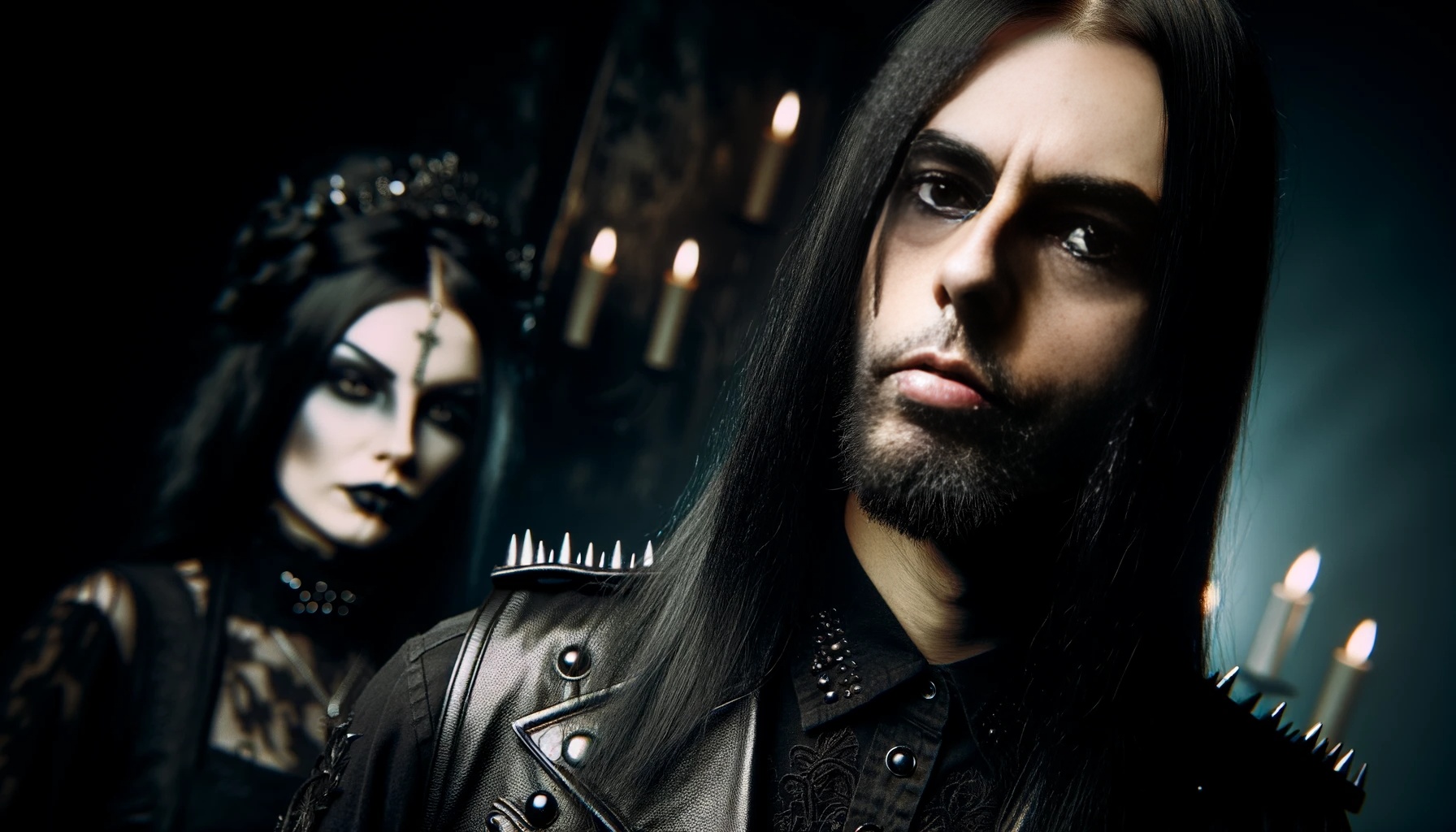In the shadowy corners of metal and goth subcultures, a vibrant thread of queer and lesbian identity weaves through the fabric of its history. These communities, often perceived as outliers in mainstream music scenes, have become sanctuaries for self-expression and acceptance. This blog post dives deep into the influential queer and lesbian figures who have shaped the goth and metal scenes, illuminating their contributions and the significant impact they’ve had on their genres and beyond.

Pioneers of Expression: Early Influences
The journey begins in the late 1970s and early 1980s, a pivotal time for both goth and metal music. Artists like Pete Burns of Dead or Alive, though more closely associated with the new wave scene, had an undeniable influence on goth’s aesthetic and ethos. Burns, known for his androgynous appearance and fierce individuality, challenged societal norms about gender and sexuality, setting a precedent for future artists to express themselves freely.
Simultaneously, metal began to see its own form of gender-bending expressionism. Artists in glam metal, such as those from Mötley Crüe and Poison, though not openly queer, adopted an androgynous style that flirted with gender norms, indirectly opening up conversations about masculinity and identity within the metal community.

Breaking Barriers: The 1990s to Today
As we moved into the 1990s, the presence of queer and lesbian individuals became more visible within these subcultures. The goth scene, in particular, embraced a more explicit exploration of gender and sexuality. This period saw the rise of artists like Rozz Williams of Christian Death, whose exploration of dark themes and personal struggles with identity resonated deeply within the community.
In metal, the openness about sexuality became more pronounced with figures like Gaahl, former frontman of Gorgoroth. Gaahl, who is openly gay, broke significant ground in the black metal scene—a subgenre often marred by controversies over its problematic elements. His presence challenged stereotypes about who could participate in metal’s subcultures and what it meant to be a ‘true’ metalhead.

Lesbian Icons in Goth and Metal
Focusing on lesbian icons, the landscape is rich with artists who have carved out spaces for queer women in music scenes often dominated by heterosexual narratives. Mina Caputo of Life of Agony, who came out as transgender in 2011, had initially been a lesbian icon in the metal scene. Her transition story is a powerful testament to the fluidity of gender and sexuality, and it has inspired many fans to embrace their true selves.
In the goth realm, musicians like Gitane Demone, who performed with Christian Death and later embarked on a solo career, have been pivotal. Her music delves into the complexities of love and desire, themes that resonate strongly within the lesbian community.

Queer Themes in Lyrics and Visuals
The exploration of queer themes extends beyond the musicians’ personal identities. Lyrically and visually, both goth and metal music have delved into topics of alienation, loneliness, and the desire for acceptance—themes that are universally resonant but particularly poignant for queer listeners.
Bands like Type O Negative, with their deep, sultry vocals and themes of romanticism, have attracted a diverse fan base that finds solace in their haunting melodies and melancholic lyrics. Similarly, the theatrical and often flamboyant performances of goth bands like The Cure and Sisters of Mercy have appealed to those who feel different from the societal norm.

The Impact on the Community
The impact of these queer and lesbian icons is profound. They have not only shaped the sound and aesthetic of their respective genres but have also provided a voice for those who often feel marginalized. By standing as visible representatives of the LGBTQ+ community, they have helped foster a sense of inclusion and solidarity among fans.

Conclusion: A Legacy of Inclusivity
The legacy of queer and lesbian icons in metal and goth is one of bravery and artistic authenticity. They have shown that these music scenes are about more than just sound—they are about community, identity, and the relentless pursuit of self-expression. As these communities continue to evolve, the influence of these trailblazers ensures that goth and metal remain welcoming spaces for all, regardless of sexual orientation or gender identity.

For more thoughts on the intersection of music, identity, and culture, check out my my section on queer perspectives in alternative subcultures. You can also follow me on social media for updates on my latest projects and musings.




